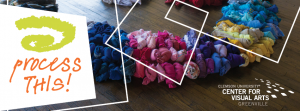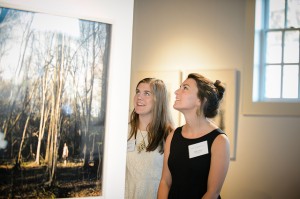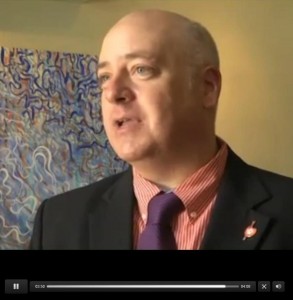Featuring art by Clemson University’s Master of the Fine Arts students
Starting December 6 and ending January 25 at Clemson’s Center for the Visual Arts – Greenville, artists in the University’s MFA program in collaboration with honors students in an undergraduate English Accelerated Composition course will exhibit works that broadly interpret and examine the multi-faceted concept of “process.” Adam Glick, Associate Director of Galerie Lelong in Manhattan, juried the exhibit. Featured artists include Ayako Abe-Miller, David Armistead, Laken Bridges, Tanna Burchinal, Lindsey Elsey, David Gerhard, Alexandra Giannelle, Ali Hammond, Nina Kawar, Adrienne Lichliter, Joel Murray, Alyssa Reiser Prince, Brent Pafford, Aubree Ross and Hilary Siber. An audio component will accompany many of the works on exhibit which features each artist talking about how their processes and concepts.
The exhibit simultaneously examines the artists’ conception of their own process and the way in which art contributes to a broader sense of how we all go about shaping and responding to the world around us. Works in the exhibit interpret the artistic process in terms of materials and the passage of time as well as in relation to mechanical, biological, and environmental processes.
The Center for Visual Arts at Clemson University worked in collaboration with English honors composition class composed predominantly of engineering majors in the conception and execution of the exhibit. Contributing English honors students include: Matthew R. Adamson, Deepti M. Athavale, Luke V. Bauer, Kayla A. Brunelle, Holly C. Erickson, Brian C. Fitzgerald, Benjamin A. Jones, Dylan A. Pyle, William C. Tharpe, Mary K. Thorne, Peter D. Tomasic, and Kelsey S. Turner. These students collaborated with several Clemson University employees: Denise Woodward-Detrich, Lee Gallery Director; John Morgenstern, Visiting English Assistant Professor; Kathy Edwards, Research & Collection Development Librarian; Jan Lay, CCIT Technical Learning Instructor; Eugene Ellenberg, Center for Visual Arts-Greenville Coordinator; Meredith Mims McTigue, CVA/Art Department Marketing and Public Relations Director; and Nathan Newsome, CVA-Lee Gallery Intern.
Admission is free to the exhibition and reception. The exhibition can be viewed in the Center for Visual Arts-Greenville located in the Village of West Greenville 1 p.m to 6 p.m. Thursday through Saturday and First Fridays 1 p.m. to 9 p.m. The reception is Friday, December 06, 6:30 p.m. to 9 p.m. For more information, visit www.clemsonprocessthis.com or follow on Twitter @cuprocessthis.
About The Center for Visual Arts
The Center for Visual Arts (CVA) in Lee Hall at Clemson University is where students, visitors and scholars explore contemporary perspectives in art and culture through research, outreach programming and studio practice. With a mission to engage and render visible the creative process, the CVA is a dynamic intellectual and physical environment where art is created, exhibited and interpreted. It educates through academic research and practice with art at its core, drawing upon varied disciplines to examine critically cultural issues and artistic concerns.
The Center for Visual Arts-Greenville is a satellite of the Center for Visual Arts at Clemson University, which serves as the umbrella for all visual art activities at the university. Though there is not a physical building for this center, the majority of the activities for the Center of Visual Arts are generated out of Lee Hall on the Clemson University campus.
Press Contact:
Meredith Mims McTigue
Phone: 864-656-3883
Email: mmims@clemson.edu
Center for the Visual Arts – Greenville
Location: 1278 Pendleton St, Greenville, SC 29611
CVA-Greenville Website: www.clemson.edu/cva/cva-greenville
Hours: Thursday–Saturday, 1:00 p.m.–6:00 p.m. and First Fridays: 1:00 p.m.–9:00 p.m.
Admission: Free





